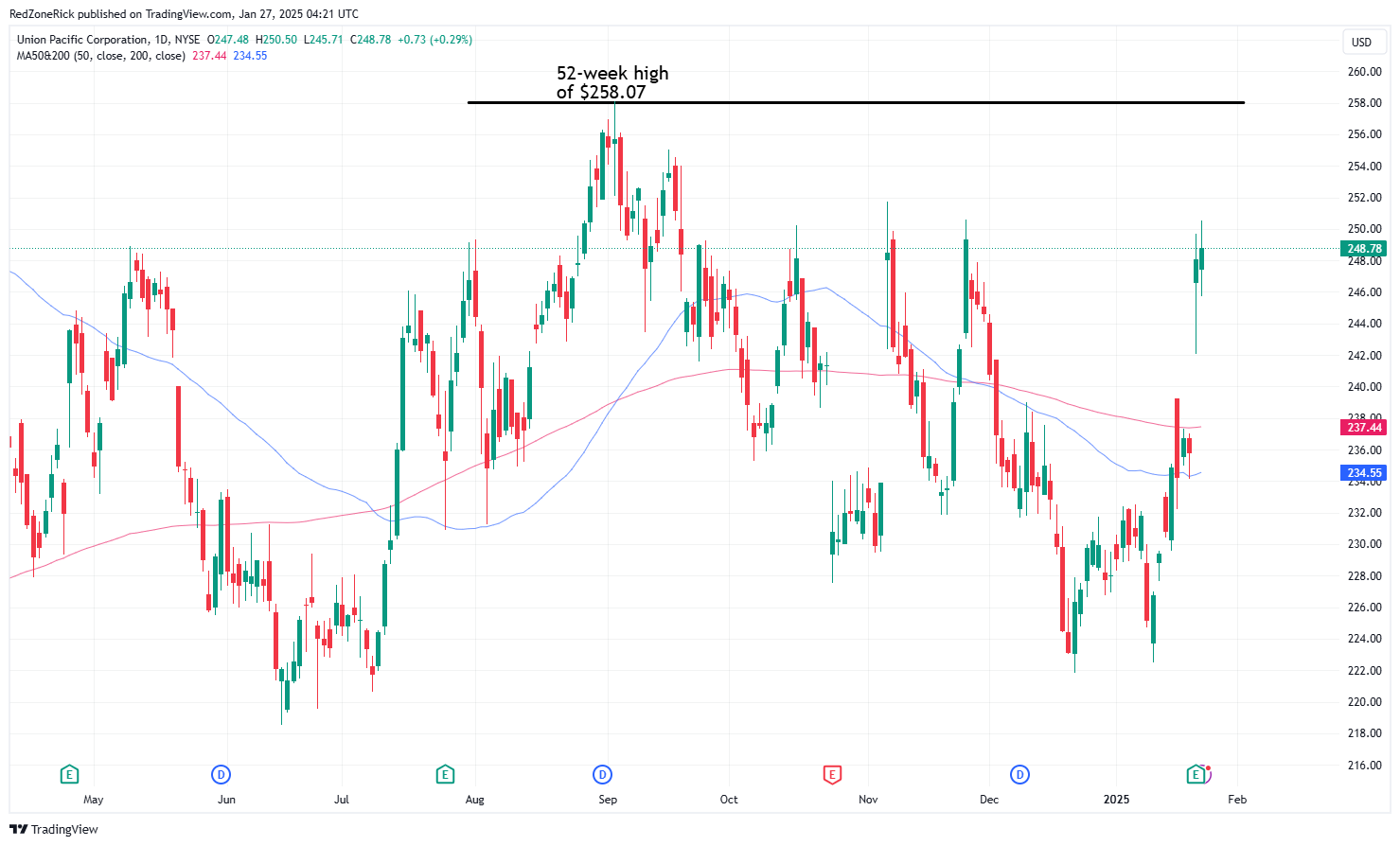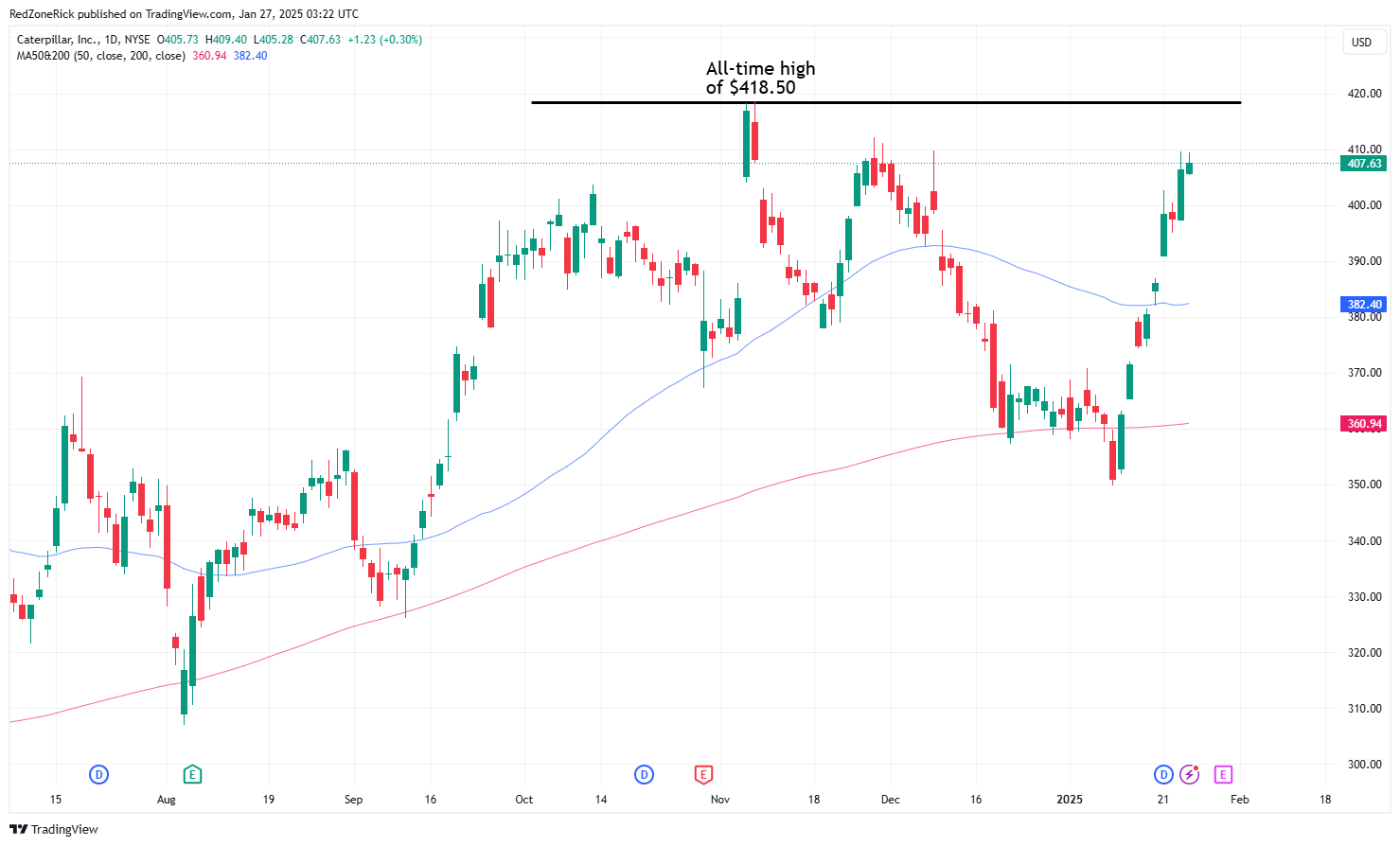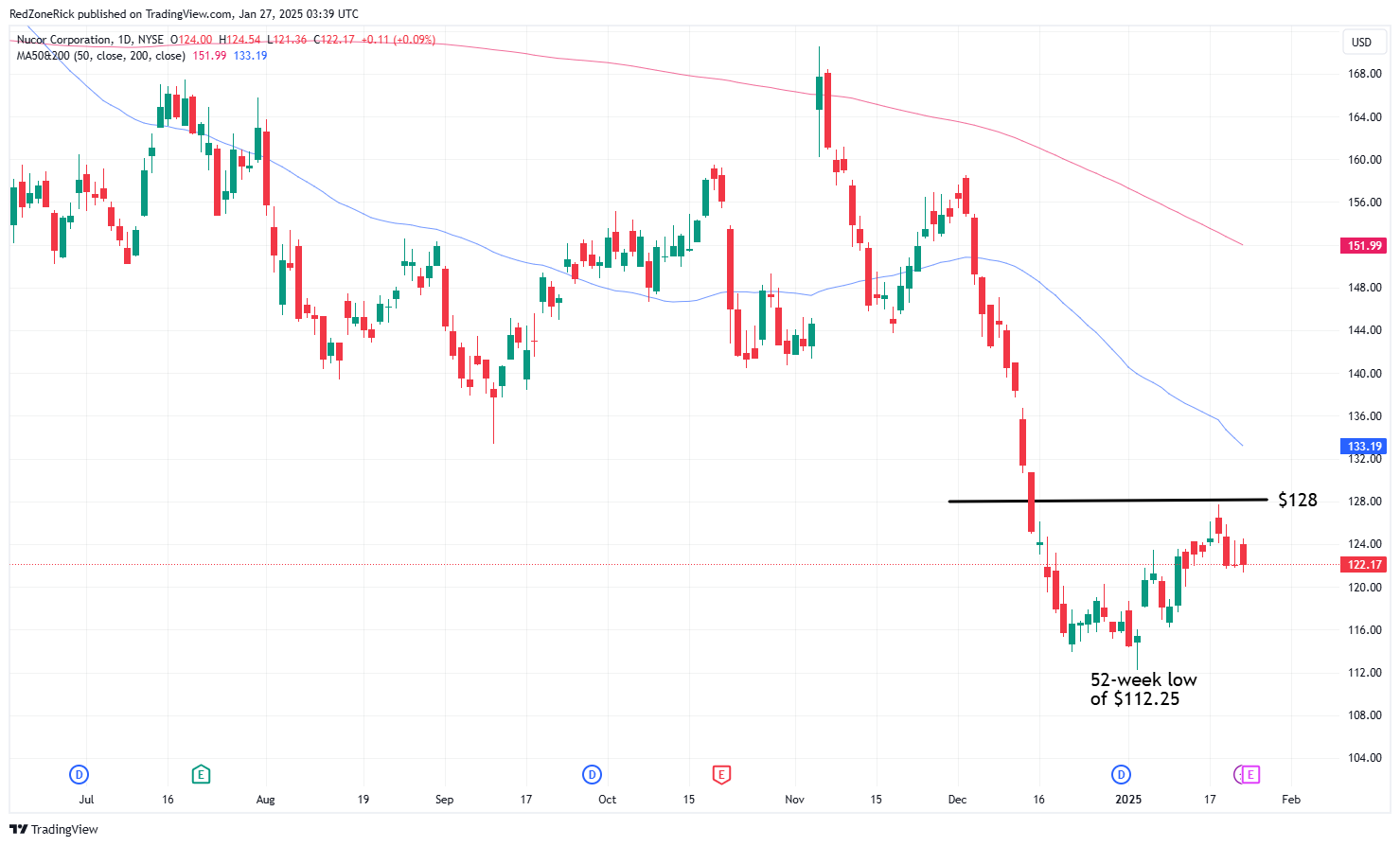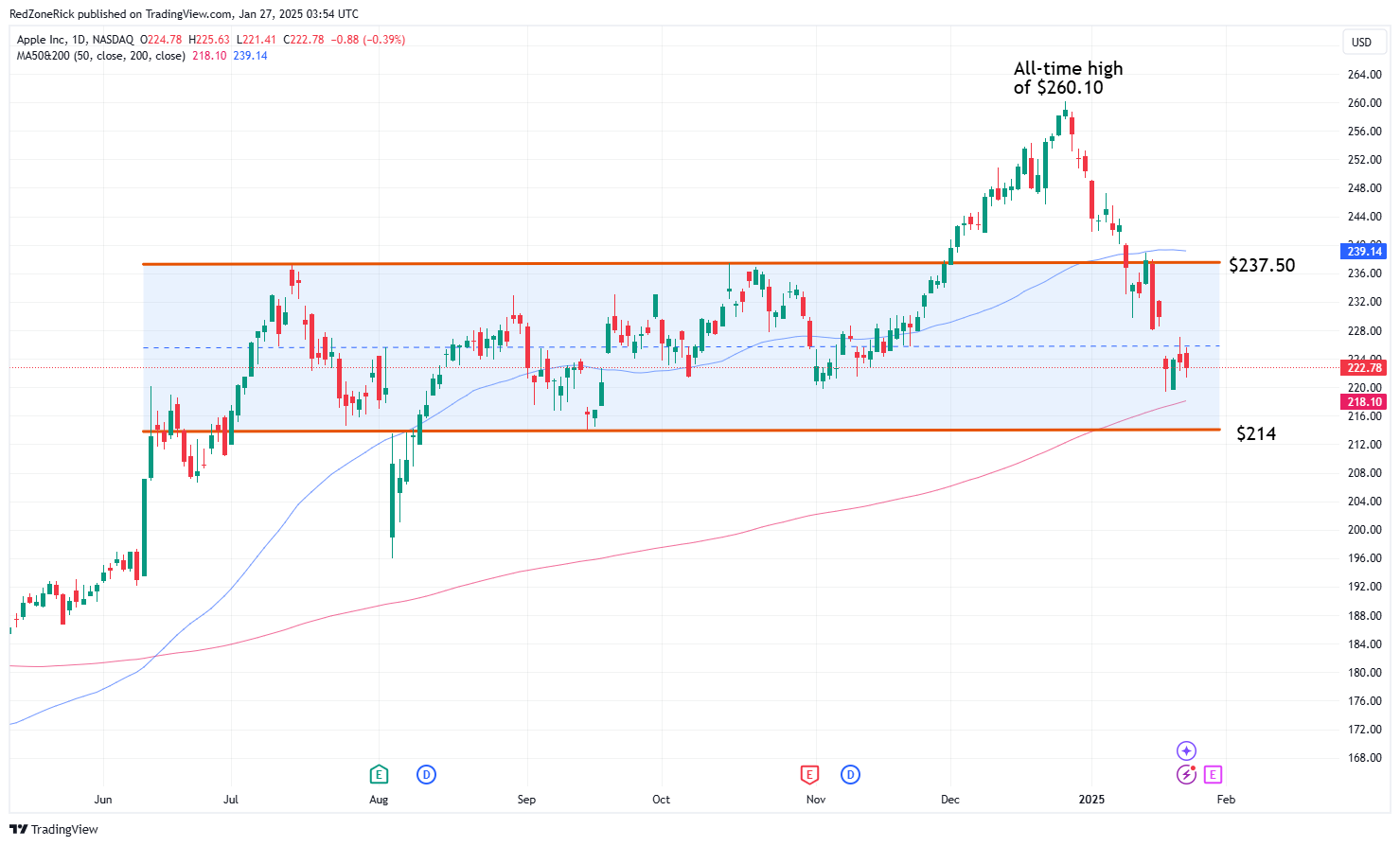
Five Stocks to Watch in a Tariff War
- The tariff war starts in February with initial estimates ranging from 10%-25%.
- Companies in the defense and aerospace sectors and Raw Materials and Commodities Producers could benefit.
- The logistics and shipping industries could be impacted, but companies that offer domestic transportation solutions might benefit from increased demand for goods.
It’s no secret President Trump plans to slap tariffs on countries around the world with trading partners such as Mexico, Canada, China, and the European Union. The initial numbers are 25% for the first two and 10% on China. Most of the tariffs will likely begin in February unless certain conditions are met.
Trump wants Canada and Mexico to stop the trafficking of illegal migrants and fentanyl. Both counties have started the planning steps and are preparing for possible negotiations.
While the exact details are still unknown, in a tariff war, certain stocks could benefit due to shifts in global trade dynamics, supply chains, or their specific business models.
Here are five stocks to add to your Watch List that might do well in such an environment. To start, U.S. based manufacturing companies that primarily operate in the country and are less reliant on foreign supply chains could benefit from tariffs. Tariffs on imported goods might make domestic products more competitive.
Caterpillar(CAT) is major U.S.-based manufacturer of heavy equipment and could benefit from increased demand for U.S. products as foreign competition faces higher tariffs. The company has topped earnings estimates in six of the past seven quarters and will announce numbers on January 30th. Wall Street is expected a profit of $5.05 a share on revenue of $16.6 billion.
Shares have recently cleared their 50-day moving average with resistance and the November 7th all-time peak at $418.50. The company currently pays a yearly dividend of $5.64 (1.4% current yield) with a market cap of just under $200 billion.

Companies in the defense and aerospace sectors often have a significant amount of domestic production and government contracts. They might be less impacted by tariffs, and in some cases, may see increased demand if trade tensions lead to greater government spending on defense.
Lockheed Martin (LMT) could see increased government contracts or benefit from heightened national security concerns. The company has topped earnings estimates in for nine-straight quarters and will announce numbers on January 28th. Analysts are expecting a profit of $6.60 a share on revenue of $18.8 billion.
Despite the string of earnings beats, shares are down 20% since the October 21st all-time high at $618.95. A near-term double-bottom appears to have formed with the January 7th and 8th lows at $462.94 and $461.24, respectively. A death-cross has recently formed with the 50-day moving average falling below the 200-day moving average. This is typically a bearish technical development for lower lows but could be reversed on closes above the latter and the $515 area.
The company currently pays a yearly dividend of $13.20 (2.7% current yield) with a market cap of $118 billion.

Raw Materials and Commodities Producers such as steel, aluminum, or agricultural products, could see increased demand if tariffs are placed on imported goods, and domestic prices rise due to limited supply.
Nucor (NUE) is a leading U.S. steel manufacturer that could benefit if tariffs are imposed on foreign steel, increasing demand for its products. The company missed earnings estimates by a penny last quarter and will announce numbers on January 27th. Analysts are expecting a profit of $0.65 a share on revenue of $6.76 billion. The company had topped estimates six of the previous seven quarters.
Shares were recently down 45% from a 52-week and all-time high of $203 to a recent 52-week low of $112.25. If numbers disappoint, new lows could come into play. Resistance is at $128. The company currently pays a yearly dividend of $2.20 (1.8% current yield) with a market cap of just under $28 billion.

Technology companies that have minimal exposure to foreign supply chains makes them less vulnerable to tariffs. In other words, if they manufacture products domestically or have significant domestic customer bases, they could benefit.
While Apple (AAPL) has significant exposure to foreign production, it could still benefit from shifts in tariffs by sourcing more products domestically or passing the costs onto customers. However, the company missed estimates by 63 cents last quarter, following six-straight beats, on better-than-expected revenue of $94.93 billion.
Shares are down 14% from the December 26th all-time high of $260.10 and back in the middle of a longer-term trading range between $214-$237.50 that has lasted since last June. The 50-day moving average has flatlined with price action also hovering just above the 200-day moving average. The company currently pays a yearly dividend of $1.00 (0.5% current yield) with a market cap of just under $3.35 trillion.

In a tariff war, the logistics and shipping industries could be impacted, but companies that offer domestic transportation solutions might benefit from increased demand for goods that are now produced or shipped domestically, rather than internationally.
Union Pacific Corporation (UNP) is a leading U.S. railroad company that could see increased demand for shipping goods if global trade slows down. The company recently reported a profit of $2.91 a share on revenue of $6.12 billion.
The 12-cent beat has shares making a run towards the early September 52-week high just north of $258. The all-time high from November 2022 is around the $271 area. The company currently pays a yearly dividend of $5.38 (2.3% current yield) with a market cap of $150 billion.

It is important to note, the performance of these companies will likely depend on the specific nature of any tariff war, the countries involved, and the broader economic environment. Investors should always conduct their own research and consider consulting with a financial advisor before making investment decisions.
TRENDING: These 3 ‘Small Account’ Strategies CRUSHED 2024!
For years, we’ve been hearing traders as the same question… over and over again…
“How can I get started without risking it all?”
Because let’s get real for a second. Most strategies NEVER work. And when they do – they expose you to so much risk that the SECOND you hit a losing trade – you’re wiped out.
For this very reason, we have been working on a basic system that uses three types of trades.
It’s fully integrated and can take less than 20 minutes a week to nail 15%, 88% and occasionally swing for the fences with 300%.
The best part? It’s a system you can use the rest of your life.
Go here… watch this video see if you like the strategies.
(guess what? you can access them for just $5 bucks if you like what you see)